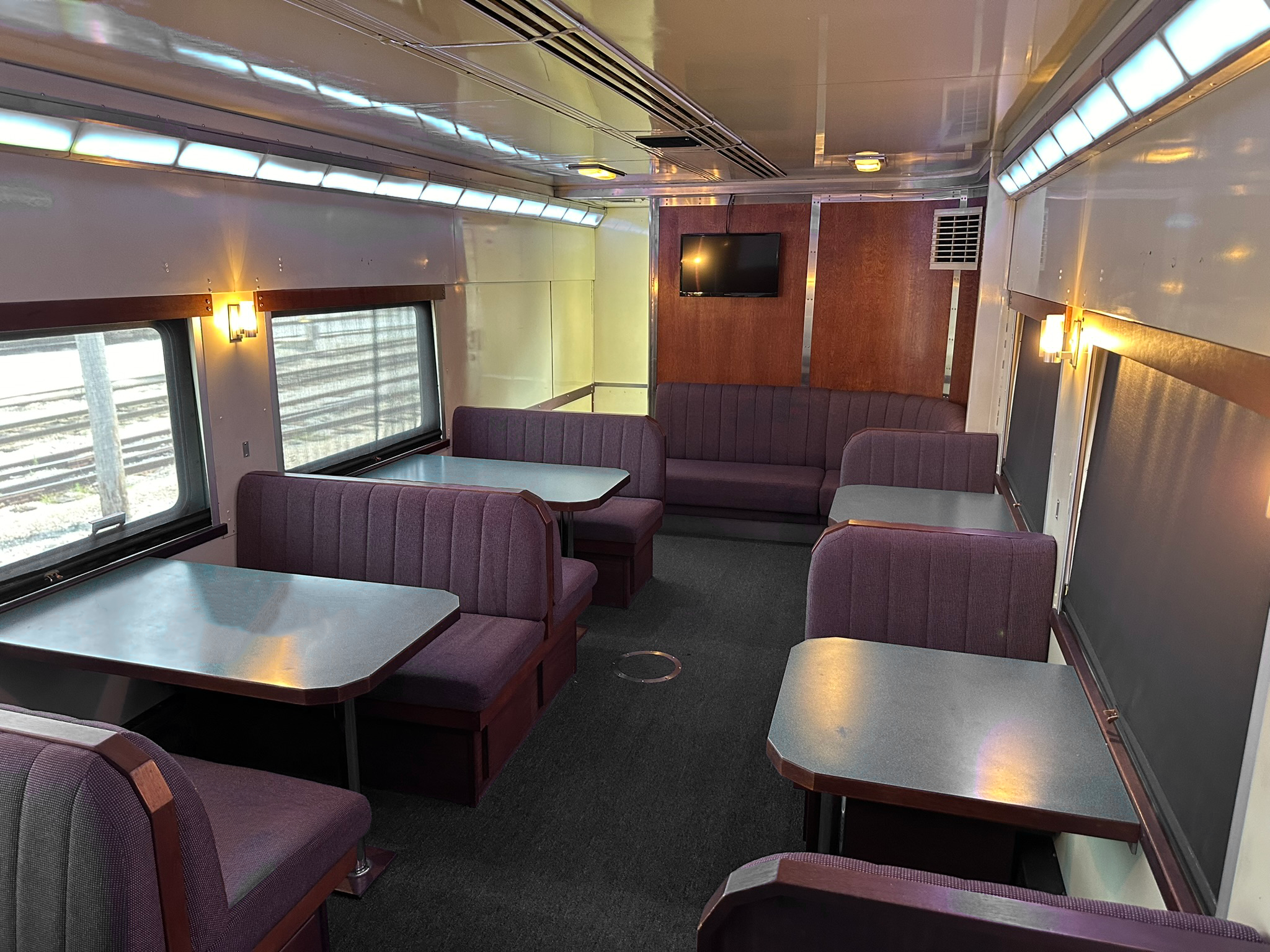Your Custom Text Here
New York Central Swift Stream
NEW to the URHS collection is the New York Central Swift Stream! This operational and beautifully restored sleeper/lounge car was purchased by URHS in July of 2024 and its the single largest investment ever made by the organization. The car will be a part of URHS’s Hudson River Rail Excursions, starting in October of this year.
You can be a part of history!
Your donation to the Swift Stream will help bring her to her forever home here in New Jersey, and make necessary repairs to return to service in October of this year!
Builder’s Photo of sister car Forest Stream. New York Central System Photo, NYCSHS Collection
History
The Swift Stream was constructed as part of the New York Central’s massive post-WWII improvement program. The railroad referred to their passengers trains collectively as the “Great Steel Fleet” and advertising of this era highlighted the “NEW New York Central.” During this time, the NYC invested a remarkable amount of money in new trains—what today would be more than 3.5 billion dollars. In hindsight, we know this was a misguided investment, because it was only a few short years later that airline travel would eclipse rail travel forever. However, the results of that investment were some of the finest railroad cars ever designed and built, including the Swift Stream.
The Swift Stream was built in 1949 by the Budd company in their trademark all-stainless steel construction. In line with its branding as “The Water Level Route,” the New York Central named all of its Pullman cars after bodies of water. The Swift Stream was one of eleven matching cars that received the suffix “Stream.” The Steam-series cars were assigned to many long-distance trains, especially those that were not assigned a full-length lounge car. These cars would often be placed adjacent to dining cars, and they would serve as both a lounge for passengers, and a waiting area for those waiting for their dining reservation.
The Swift Stream car served the Central until the company’s final day in 1968. It was then conveyed to Penn Central and later Amtrak. The Steam cars were excluded from Amtrak’s mid-70s rebuild program, and were subsequently sold off to private owners. Many of them still exist, and three are operational today—the Woodland Stream at Indiana Rail Experience, the Rippling Stream at Austin Steam Train, and the Laurel Stream at the New Hope Railroad. The Swift Stream has been cared for by several private owners since the mid 70s. Most recently, the car was purchased by Railexco, who briefly used the car for private charters before making it available to the URHS.
Design and Features
Double bedroom in a Budd car similar to the Stream-series. NYCSHS Photo
The Stream-series cars were dual purpose, with their interiors split between Pullman bedrooms and a lounge, shared by all Pullman passengers on the train. Walking through the car from the vestibule, you would first see the electrical locker and public lavatory on the right side, and the Pullman Porters’ berth on the left, as well as the linen locker. The hallway then jogs to the right, and on the left are six Pullman Double Bedrooms, the most common type of accommodation in Pullman cars of the era. While each room occupies the same square footage, each are built with a different, interlocking arrangement that allows them to each fit two beds and a private restroom. Each group of two bedrooms has a wall which can be opened to join two bedrooms into one large space for families or groups traveling together.
Lounge of the Forest Stream, identical to the Swift Stream. NYCSHS Photo
A door at the end of the hallway opens to the lounge. On the left is the “buffet”—a small kitchen for drinks and light fare. A Pullman-employed steward would have worked in this space, serving Pullman guests in the lounge. The lounge featured seating for up to 22. Its design was distinctive for its curved, wood veneer-clad walls and sofas bookending the room. In between were a mix of six lounge chairs, two banquettes for two, and a banquette for four. Like other cars that were designed by industrial designer Henry Dreyfuss, this Dreyfuss-inspired mid-century modern interior also featured light earth tones, wood veneer, and stainless steel, as well as carry-over art deco elements from Budd designs, like the long fluorescent tube fixtures and louvered air vents.
Original 1949 Floor Plan
The Swift Stream Today
During the car’s time under private ownership, many changes and upgrades have been made. The car was Amtrak-certified in the 1990s, meaning that its trucks and undercarriage have been totally rebuilt, and it has been updated to run on 480V head-end-power, compatible with the Amtrak system. Inside the car, the “buffet” kitchen was expanded to create a full-service kitchen. The lounge seating was also replaced with seven fixed banquettes. A shower was also added for the use of overnight guests, replacing the porter's section. Otherwise, the car retains a remarkable amount of its original character. URHS intends to retain some of these upgrades, but revert the lounge to its original, as-built configuration over the next several years.
Present Floor Plan


















